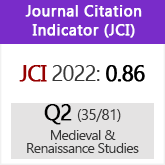Las tierras de baldío en el concejo de Soria, a fines de la Edad Media
DOI:
https://doi.org/10.3989/aem.1990.v20.1156Abstract
The farming lands of Soria, adapted to the impediments of altitude, poor soil and cold climate, were used with an important mobility in space since they were occupied in the XIIth century. The fallows, in the district of Soria, covered a wide area of available land; they were used for breeding and agriculture on «hollow hill». The permanent occupation of this land for pasture gradually delimited a patchwork of individual and council properties. Since the midle of the XVth century, the dynamic economic expansion of the Crown of Castilla affected the land in the district of Soria as it unleashed the need of land to convert it into pasture and wood production areas. The denunciation of encroachment of land, among others by the urban oligarchy of Soria, explains the wish to use these grounds for breeding. Towards the end of the XVth century, conflicts triggered off between the Mesta -defending the use of these fallows gor pasture purposes-, the urban oligarchy, who wanted to delimit their own grazing land, and the districts of some cities that sought to protect forestry. The inhabitants of the area, mainly small and medium farmers and cattle breeders, were the most affected since they lose their mobility and had to face the competition of «mesteño» breeding when they used the fallows.
Downloads
Download data is not yet available.
Downloads
Published
1990-12-30
How to Cite
Asenjo González, M. (1990). Las tierras de baldío en el concejo de Soria, a fines de la Edad Media. Anuario De Estudios Medievales, 20(1), 389–411. https://doi.org/10.3989/aem.1990.v20.1156
Issue
Section
Monographies
License
Copyright (c) 2020 Consejo Superior de Investigaciones Científicas (CSIC)

This work is licensed under a Creative Commons Attribution 4.0 International License.
© CSIC. Manuscripts published in both the printed and online versions of this Journal are the property of Consejo Superior de Investigaciones Científicas, and quoting this source is a requirement for any partial or full reproduction.All contents of this electronic edition, except where otherwise noted, are distributed under a “Creative Commons Attribution 4.0 International” (CC BY 4.0) License. You may read here the basic information and the legal text of the license. The indication of the CC BY 4.0 License must be expressly stated in this way when necessary.
Self-archiving in repositories, personal webpages or similar, of any version other than the published by the Editor, is not allowed.














